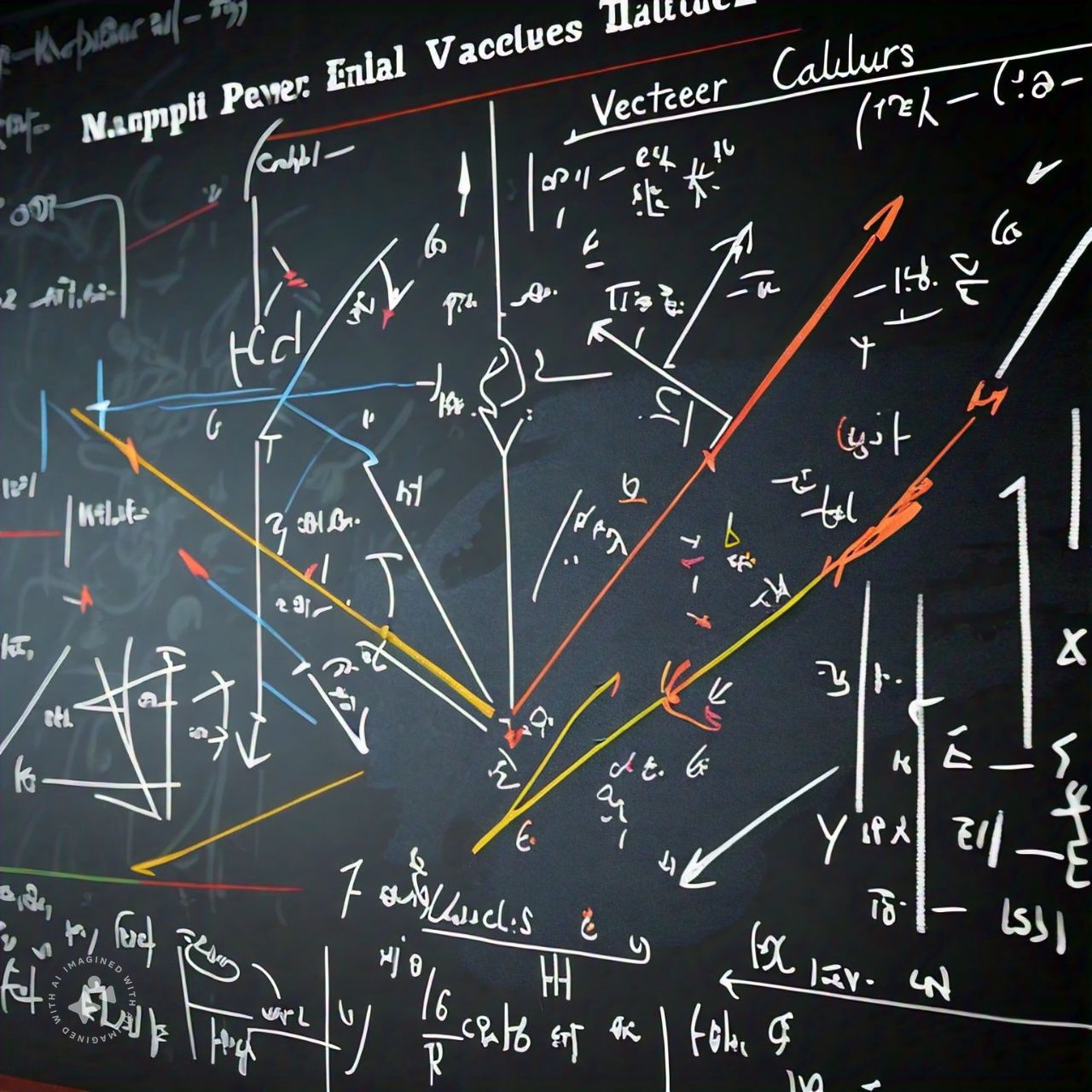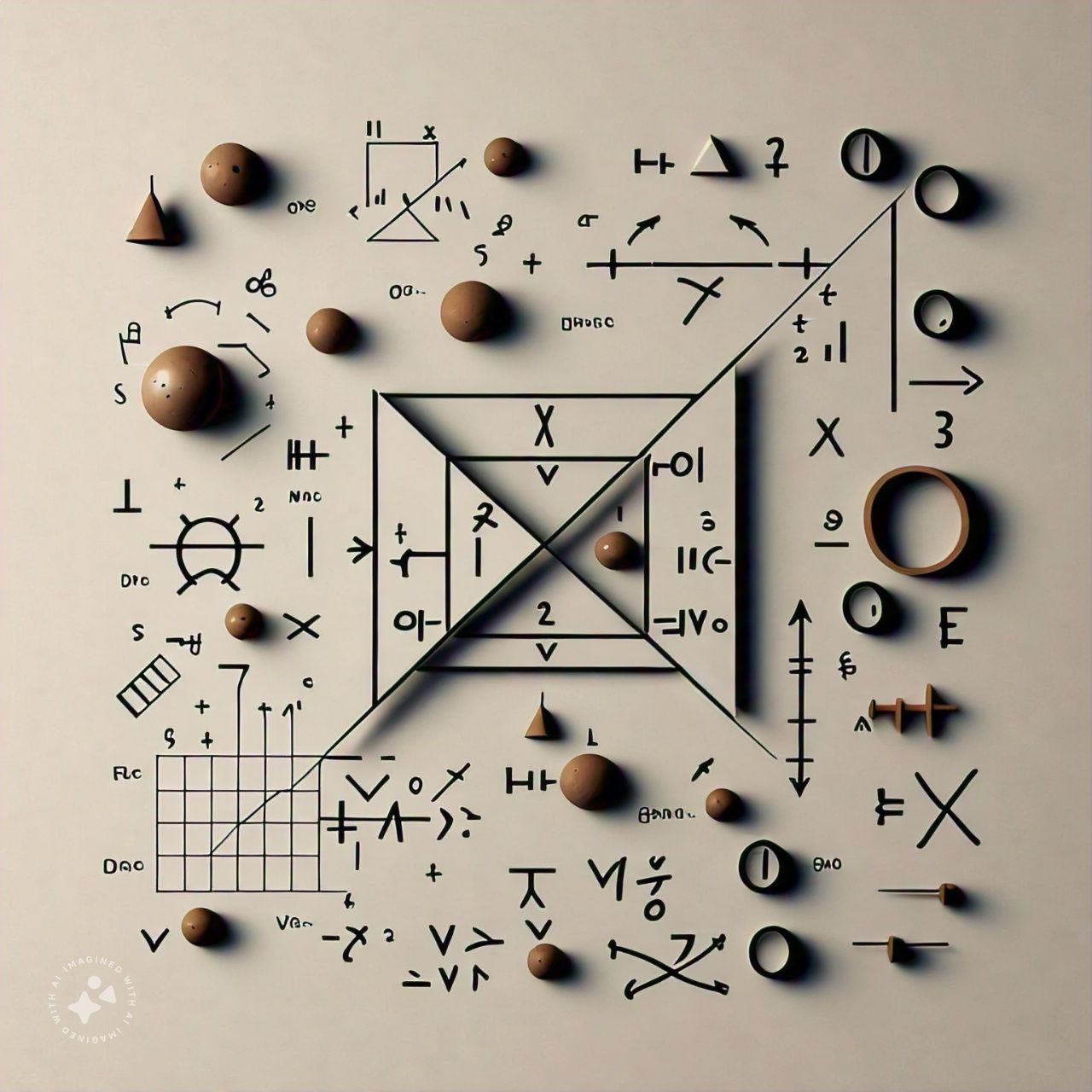- Teacher: DBCY-LMS ADMIN
- Teacher: MR. SRIRAM B TA
Don Bosco College (Co-Ed), Yelagiri Hills
Skip available courses



















Available courses
- Teacher: DBCY-LMS ADMIN
- Teacher: MS. RIYA S EN
- Teacher: DBCY-LMS ADMIN
- Teacher: DR. DIVYAKUMARI P MA
- Teacher: DBCY-LMS ADMIN
- Teacher: MS. VASANTHA RANI G CS
- Teacher: DBCY-LMS ADMIN
- Teacher: MS. PRIYADHARSHINI K CS
- Teacher: DBCY-LMS ADMIN
- Teacher: DBCY-LMS ADMIN
- Teacher: MR IMMANUEL S CS
- Teacher: DBCY-LMS ADMIN
- Teacher: MR IMMANUEL S CS
- Teacher: DBCY-LMS ADMIN
- Teacher: Dr. LATHA D TA
- Teacher: DBCY-LMS ADMIN
- Teacher: MS. GOPIKA B EN
- Teacher: DBCY-LMS ADMIN
- Teacher: MS. VASANTHA RANI G CS
- Teacher: DBCY-LMS ADMIN
- Teacher: MS. VASANTHA RANI G CS
- Teacher: DBCY-LMS ADMIN
- Teacher: DR. NAVEEN A CS
- Teacher: DBCY-LMS ADMIN
- Teacher: DR. NAVEEN A CS
Design and Analysis of Algorithms (DAA) is a fundamental field in computer science that involves creating efficient solutions to computational problems and evaluating their performance. Here are the key points:
-
Algorithm Design:
- Involves creating step-by-step instructions (algorithms) to solve specific problems.
- Focuses on designing efficient, correct, and practical algorithms.
- Aims to find optimal solutions by considering factors like time complexity, space complexity, and correctness.
-
Algorithm Analysis:
- Evaluates the efficiency of algorithms.
- Key aspects:
- Time Complexity: Measures how the running time of an algorithm grows with input size.
- Space Complexity: Measures the memory used by an algorithm.
- Asymptotic Notations: Expresses complexity in terms of upper and lower bounds (e.g., Big O, Omega, Theta).
- Worst, Average, and Best Case Analysis: Considers different scenarios.
- Loop Analysis: Examines loops within algorithms.
- Recurrence Relations: Analyzes recursive algorithms.
- Amortized Analysis: Deals with average cost over a sequence of operations
-
Topics Covered:
- Divide and conquer
- Randomization
- Dynamic programming
- Greedy algorithms
- Teacher: DBCY-LMS ADMIN
- Teacher: DR. RADHAKRISHNAN P CS
- Teacher: MS. PRIYADHARSHINI K CS
- Teacher: DBCY-LMS ADMIN
- Teacher: MS. POOVARASI S CS
- Teacher: DBCY-LMS ADMIN
- Teacher: MR. JOSHUA L EN
- Teacher: MRS. ANGELA CHRISTY A EN
- Teacher: DBCY-LMS ADMIN
- Teacher: Dr. LATHA D TA
- Teacher: MR. SRIRAM B TA

- Teacher: DBCY-LMS ADMIN
- Teacher: Ms. DALLY MARIA EVANGELINE A MA
- Teacher: MS. SNEGA R MA
- Teacher: DBCY-LMS ADMIN
- Teacher: MR. MD IRFAN H CA
- Teacher: MRS. GNANAPRAGASAM A CA
- Teacher: DBCY-LMS ADMIN
- Teacher: MR. BASKAR M CA
- Teacher: MS. SRI KAVI CA
- Teacher: DBCY-LMS ADMIN
- Teacher: MR. BASKAR M CA
- Teacher: MS. SRI KAVI CA
- Teacher: DBCY-LMS ADMIN
- Teacher: MR. JOHN BENETIC G CA
- Teacher: MS. JAYASHREE S CA
- Teacher: DBCY-LMS ADMIN
- Teacher: DR. JAYAMARY A CA
- Teacher: MR. MD IRFAN H CA
- Teacher: DBCY-LMS ADMIN
- Teacher: DR. JAYAMARY A CA
- Teacher: MRS. GNANAPRAGASAM A CA
- Teacher: DBCY-LMS ADMIN
- Teacher: DBCY-LMS ADMIN
- Teacher: DR. JAYAMARY A CA
- Teacher: MRS. GNANAPRAGASAM A CA
- Teacher: DBCY-LMS ADMIN
- Teacher: DR. JAYAMARY A CA
- Teacher: MR. MD IRFAN H CA
- Teacher: DBCY-LMS ADMIN
- Teacher: MR. JOSHUA L EN
- Teacher: MS. RAJALAKSHMI T EN
- Teacher: DBCY-LMS ADMIN
- Teacher: Dr. LATHA D TA
- Teacher: MR. SRIRAM B TA
- Teacher: DBCY-LMS ADMIN
- Teacher: MR. JOHN BENETIC G CA
- Teacher: MS. JAYASHREE S CA
- Teacher: DBCY-LMS ADMIN
- Teacher: MR. JOHN BENETIC G CA
- Teacher: MS. JAYASHREE S CA
- Teacher: DBCY-LMS ADMIN
- Teacher: MR. BASKAR M CA
- Teacher: MRS. SHYAMALA M CA
- Teacher: DBCY-LMS ADMIN
- Teacher: MR. BASKAR M CA
- Teacher: MRS. SHYAMALA M CA
- Teacher: DBCY-LMS ADMIN
- Teacher: MR. JOHN BENETIC G CA
- Teacher: MS. SRI KAVI CA
- Teacher: DBCY-LMS ADMIN
- Teacher: MR. MD IRFAN H CA
- Teacher: DBCY-LMS ADMIN
- Teacher: DR. JAYAMARY A CA
- Teacher: DBCY-LMS ADMIN
- Teacher: DR. JAYAMARY A CA
- Teacher: MR. BASKAR M CA
- Teacher: MR. JOHN BENETIC G CA
- Teacher: MR. MD IRFAN H CA
- Teacher: MRS. GNANAPRAGASAM A CA
- Teacher: MRS. SHYAMALA M CA
- Teacher: MS. JAYASHREE S CA
- Teacher: MS. SRI KAVI CA
- Teacher: DBCY-LMS ADMIN
- Teacher: DR. SARAVANAN P TA
- Teacher: DBCY-LMS ADMIN
- Teacher: MS. POOVARASI S CS
- Teacher: DR. ANTONY RAJ . A MA
- Teacher: DBCY-LMS ADMIN
- Teacher: MS. SNEGA R MA

- Teacher: DBCY-LMS ADMIN
- Teacher: Ms. DALLY MARIA EVANGELINE A MA
- Teacher: DBCY-LMS ADMIN
- Teacher: DR. ANTONY RAJ . A MA
- Teacher: DBCY-LMS ADMIN
- Teacher: Mr. K. AGILARASAN MA
- Teacher: DBCY-LMS ADMIN
- Teacher: MR. KARTHIK N TA

- Teacher: DBCY-LMS ADMIN
- Teacher: Ms. DALLY MARIA EVANGELINE A MA
- Teacher: DBCY-LMS ADMIN
- Teacher: MS. SNEGA R MA

1.Vector Fields
- A vector field assigns a vector to every point in a region of space.
- Example: The gravitational field, where each point has a vector pointing towards the Earth’s center.
2. Gradient (∇f)
- The gradient of a scalar field is a vector field that points in the direction of the greatest rate of increase of the function.
- Mathematically: .
- Application: Used in physics to find the direction of the steepest ascent.
3. Divergence (∇ · F)
- The divergence of a vector field measures the rate at which "stuff" is expanding from a point.
- Mathematically: .
- Application: Used to describe sources or sinks in fluid flow.
4. Curl (∇ × F)
- The curl of a vector field measures the rotation or the swirling strength of the field around a point.
- Mathematically: .
- Application: Important in electromagnetism (e.g., Faraday’s Law of Induction).
5. Line Integrals
- The line integral of a vector field along a curve measures the work done by the field in moving a particle along that curve.
- Mathematically: , where is a differential element of the curve .
6. Surface Integrals
- The surface integral extends the concept of line integrals to surfaces. It measures the flow of a vector field across a surface.
- Mathematically: , where is a differential element of the surface .
7. Theorems
- Gradient Theorem: Relates a line integral of a gradient field to the difference in the scalar field at the endpoints.
- Divergence Theorem (Gauss's Theorem): Converts a surface integral over a closed surface to a volume integral of the divergence over the region inside.
- Stokes' Theorem: Relates a surface integral of the curl of a vector field over a surface to a line integral of the vector field around the boundary curve of the surface.
- Teacher: DBCY-LMS ADMIN
- Teacher: MS. JULI MATTENA M MA
- Teacher: DBCY-LMS ADMIN
- Teacher: DR. ANTONY RAJ . A MA
- Teacher: Mr. K. AGILARASAN MA

- Teacher: DBCY-LMS ADMIN
- Teacher: MS. KEERTHANA DEVI M EN
- Teacher: DBCY-LMS ADMIN
- Teacher: DR. ANTONY RAJ . A MA
- Teacher: DBCY-LMS ADMIN
- Teacher: DR. DIVYAKUMARI P MA

- Teacher: DBCY-LMS ADMIN
- Teacher: Ms. DALLY MARIA EVANGELINE A MA
- Teacher: DBCY-LMS ADMIN
- Teacher: Mr. K. AGILARASAN MA

- Teacher: DBCY-LMS ADMIN
- Teacher: MS. JULI MATTENA M MA
- Teacher: DBCY-LMS ADMIN
- Teacher: MR. SURESHRAJAN R EN
- Teacher: DBCY-LMS ADMIN
- Teacher: MR. KARTHIK N TA
- Teacher: DBCY-LMS ADMIN
- Teacher: MS. HOSAN NESAHILDA S EN
- Teacher: DBCY-LMS ADMIN
- Teacher: MS. GOPIKA B EN

- Teacher: DBCY-LMS ADMIN
- Teacher: MR. SARATHAKUMAR G EN
- Teacher: MS. KEERTHANA DEVI M EN
- Teacher: DBCY-LMS ADMIN
- Teacher: MS. RAJALAKSHMI T EN
- Teacher: DBCY-LMS ADMIN
- Teacher: MS. RAJALAKSHMI T EN
- Teacher: DBCY-LMS ADMIN
- Teacher: MR LEO MARIA FRANCIS EN
- Teacher: DBCY-LMS ADMIN
- Teacher: MRS. ANGELA CHRISTY A EN
- Teacher: DBCY-LMS ADMIN
- Teacher: MRS. ANGELA CHRISTY A EN
- Teacher: DBCY-LMS ADMIN
- Teacher: MR SAM SURYA S EN
- Teacher: DBCY-LMS ADMIN
- Teacher: DBCY-LMS ADMIN
- Teacher: DR. SARAVANAN P TA
- Teacher: DBCY-LMS ADMIN
- Teacher: MS. RIYA S EN
- Teacher: DBCY-LMS ADMIN
- Teacher: MR. RUFUS DAYASAGARAN A EN
- Teacher: MRS. ANGELA CHRISTY A EN

- Teacher: DBCY-LMS ADMIN
- Teacher: MS. KEERTHANA DEVI M EN
- Teacher: DBCY-LMS ADMIN
- Teacher: MR. JOSHUA L EN
- Teacher: MS. HOSAN NESAHILDA S EN
- Teacher: DBCY-LMS ADMIN
- Teacher: DBCY-LMS ADMIN
- Teacher: MR. RUFUS DAYASAGARAN A EN
- Teacher: MRS. ANGELA CHRISTY A EN
- Teacher: DBCY-LMS ADMIN
- Teacher: MS. HOSAN NESAHILDA S EN
- Teacher: DBCY-LMS ADMIN
- Teacher: MRS. ANGELA CHRISTY A EN
- Teacher: DBCY-LMS ADMIN
- Teacher: MR SAM SURYA S EN
- Teacher: DBCY-LMS ADMIN
- Teacher: MR. EVANS SAM VICTOR. J EN
- Teacher: DBCY-LMS ADMIN
- Teacher: MR. SURESHRAJAN R EN
- Teacher: DBCY-LMS ADMIN
- Teacher: MR SAM SURYA S EN
- Teacher: DBCY-LMS ADMIN
- Teacher: MS. RAJALAKSHMI T EN
- Teacher: DBCY-LMS ADMIN
- Teacher: MR. EVANS SAM VICTOR. J EN
- Teacher: DBCY-LMS ADMIN
- Teacher: MR. SRINATH D EN
- Teacher: DBCY-LMS ADMIN
- Teacher: MR. SURESHRAJAN R EN
- Teacher: DBCY-LMS ADMIN
- Teacher: MR SAM SURYA S EN
- Teacher: DBCY-LMS ADMIN
- Teacher: MR. SARATHAKUMAR G EN
- Teacher: DBCY-LMS ADMIN
- Teacher: DBCY-LMS ADMIN
- Teacher: MS. SUWETHA LAKSHMI P DS
- Teacher: DBCY-LMS ADMIN
- Teacher: MS. SUWETHA LAKSHMI P DS

- Teacher: DBCY-LMS ADMIN
- Teacher: MS. GOKULALAKSHMI D DS
- Teacher: DBCY-LMS ADMIN
- Teacher: MR. DANIEL CHRISTOPHER J DS
- Teacher: DBCY-LMS ADMIN
- Teacher: MR. MADHAVAN J P DS
- Teacher: DBCY-LMS ADMIN
- Teacher: MR. SARATHAKUMAR G EN
- Teacher: DBCY-LMS ADMIN
- Teacher: MS. SUWETHA LAKSHMI P DS

- Teacher: DBCY-LMS ADMIN
- Teacher: MS. GOKULALAKSHMI D DS
- Teacher: DBCY-LMS ADMIN
- Teacher: MS. SUWETHA LAKSHMI P DS

- Teacher: DBCY-LMS ADMIN
- Teacher: MS. GOKULALAKSHMI D DS
- Teacher: DBCY-LMS ADMIN
- Teacher: MR. MADHAVAN J P DS
- Teacher: DBCY-LMS ADMIN
- Teacher: DR. SARAVANAN P TA
- Teacher: DBCY-LMS ADMIN
- Teacher: MR. DANIEL CHRISTOPHER J DS
- Teacher: DBCY-LMS ADMIN
- Teacher: MRS. SHOBANA P DS

- Teacher: DBCY-LMS ADMIN
- Teacher: MS. GOKULALAKSHMI D DS
- Teacher: DBCY-LMS ADMIN
- Teacher: MR. DANIEL CHRISTOPHER J DS
- Teacher: DBCY-LMS ADMIN
- Teacher: MR. MADHAVAN J P DS
- Teacher: DBCY-LMS ADMIN
- Teacher: MS. SUWETHA LAKSHMI P DS
- Teacher: DBCY-LMS ADMIN
- Teacher: MR. EVANS SAM VICTOR. J EN
- Teacher: DBCY-LMS ADMIN
- Teacher: MR. KARTHIK N TA
- Teacher: DBCY-LMS ADMIN
- Teacher: MR. YESU MARIYAN L CO
- Teacher: Mrs Mahalakshmi G CO
- Teacher: DBCY-LMS ADMIN
- Teacher: MR. RAJESHKUMAR J CO
- Teacher: DBCY-LMS ADMIN
- Teacher: MR. AMIT KUMAR GUPTA CO

- Teacher: DBCY-LMS ADMIN
- Teacher: MR. MELVIN CO
- Teacher: DBCY-LMS ADMIN
- Teacher: MR JAGAN RAJ CO
- Teacher: DBCY-LMS ADMIN
- Teacher: MR. SURESHRAJAN R EN
- Teacher: DBCY-LMS ADMIN
- Teacher: DR. DIVYAKUMARI P MA
- Teacher: DBCY-LMS ADMIN
- Teacher: DBCY-LMS ADMIN
- Teacher: MR. YESU MARIYAN L CO
- Teacher: DBCY-LMS ADMIN
- Teacher: MR. AMIT KUMAR GUPTA CO
- Teacher: Mrs Mahalakshmi G CO
- Teacher: DBCY-LMS ADMIN
- Teacher: MR GOVINDARAJ R T CO
- Teacher: DBCY-LMS ADMIN
- Teacher: MR. YESU MARIYAN L CO
- Teacher: Mrs Mahalakshmi G CO
- Teacher: DBCY-LMS ADMIN
- Teacher: MR JAGAN RAJ CO
- Teacher: DBCY-LMS ADMIN
- Teacher: MR. KARTHIK N TA
- Teacher: MR. SRIRAM B TA
- Teacher: DBCY-LMS ADMIN
- Teacher: MR. RAJESHKUMAR J CO
- Teacher: DBCY-LMS ADMIN
- Teacher: MR GOVINDARAJ R T CO

- Teacher: DBCY-LMS ADMIN
- Teacher: MR. MELVIN CO
- Teacher: DBCY-LMS ADMIN
- Teacher: MR. AMIT KUMAR GUPTA CO

- Teacher: DBCY-LMS ADMIN
- Teacher: MR. MELVIN CO
- Teacher: DBCY-LMS ADMIN
- Teacher: DR. SARAVANAN P TA
- Teacher: DBCY-LMS ADMIN
- Teacher: MR. SRINATH D EN
- Teacher: DBCY-LMS ADMIN
- Teacher: MR. RAJESHKUMAR J CO

- Teacher: DBCY-LMS ADMIN
- Teacher: MR. ARUL ANTHONY ROZARIO M MS

- Teacher: DBCY-LMS ADMIN
- Teacher: MR. ARUL ANTHONY ROZARIO M MS
- Teacher: DBCY-LMS ADMIN
- Teacher: DR. MURUGAN G MS
- Teacher: DBCY-LMS ADMIN
- Teacher: MR. KARTHIKEYAN V MS
- Teacher: DBCY-LMS ADMIN
- Teacher: MR. SRIRAM B TA
- Teacher: DBCY-LMS ADMIN
- Teacher: MR. RUFUS DAYASAGARAN A EN
- Teacher: DBCY-LMS ADMIN
- Teacher: MR. YESU MARIYAN L CO
- Teacher: Mrs Mahalakshmi G CO
- Teacher: DBCY-LMS ADMIN
- Teacher: MS. SNEGA R MA
- Teacher: DBCY-LMS ADMIN
- Teacher: MRS. JAINY G MS
- Teacher: DBCY-LMS ADMIN
- Teacher: MRS. JAINY G MS
- Teacher: DBCY-LMS ADMIN
- Teacher: DR. MURUGAN G MS
- Teacher: DBCY-LMS ADMIN
- Teacher: MR. KARTHIKEYAN V MS
- Teacher: DBCY-LMS ADMIN
- Teacher: MR. KARTHIKEYAN V MS
- Teacher: DBCY-LMS ADMIN
- Teacher: MR. KARTHIKEYAN V MS

- Teacher: DBCY-LMS ADMIN
- Teacher: MR. ARUL ANTHONY ROZARIO M MS
- Teacher: DBCY-LMS ADMIN
- Teacher: DR. MURUGAN G MS

- Teacher: DBCY-LMS ADMIN
- Teacher: MR. ARUL ANTHONY ROZARIO M MS
- Teacher: DBCY-LMS ADMIN
- Teacher: MRS. JAINY G MS

